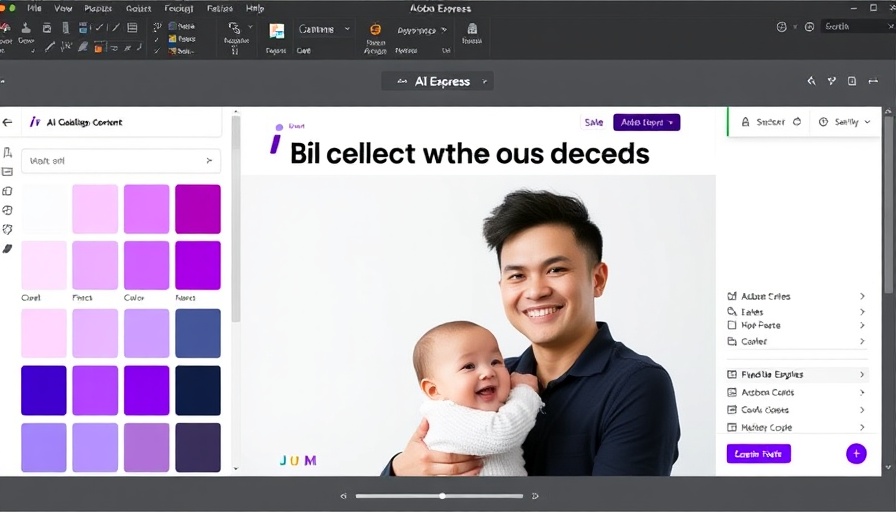
Revolutionizing Content Creation with AI
In today’s digital landscape, the demand for consistent, on-brand content is at an all-time high. For business owners and consultants, like you, finding ways to streamline content creation while ensuring quality can prove to be a daunting task. Enter Adobe Express, a tool designed to empower organizations by generating scalable, AI-driven content that resonates with brand identity.
Why Adobe Express Stands Out
Adobe Express leverages artificial intelligence to simplify the content creation process. It helps users create a range of materials, from social media posts to detailed marketing collateral, without requiring advanced graphic design skills. This gives small business owners a much-needed edge in a competitive market.
By utilizing machine learning algorithms, Adobe Express can analyze existing branding elements and content strategies. This ensures that any new content aligns with your brand voice and aesthetics, thereby enhancing brand recognition and loyalty.
Benefits of Scalable, Branded Content
Being able to produce high-quality, branded content quickly can directly impact a business's bottom line. With Adobe Express, you can save time and resources, allowing your team to focus on strategic growth rather than getting bogged down in the minutiae of design. Imagine freeing up hours each week that would otherwise be spent on content creation!
Moreover, the tool's collaborative features allow teams to work together seamlessly, promoting consistency across multiple platforms. This is particularly valuable in client acquisition and retention, as cohesive branding reinforces trust and engagement.
Five Key Features of Adobe Express
1. **AI-Driven Templates**: Start with customizable templates tailored to various industries. This leap forward eliminates the guesswork in design.
2. **Brand Management**: Store brand assets in one accessible location, ensuring your team has everything needed to maintain brand consistency.
3. **Collaborative Tools**: Enhance teamwork with features that allow real-time editing and feedback. Your team can generate content faster and smarter.
4. **Multi-Channel Sharing**: Simplify the process of sharing across social media platforms, ensuring your content reaches the right audience effectively.
5. **Analytics Dashboard**: Gain insights on engagement and performance metrics that support informed decision-making for future campaigns.
Practical Insights to Maximize This Tool
Integrating Adobe Express into your business strategy provides more than just a design tool; it’s about leveraging technological advancements for growth. Here are several actionable tips to enhance your experience:
- Regularly update your brand assets to keep your content fresh and relevant.
- Experiment with different templates and styles to find what resonates best with your audience.
- Utilize the analytics dashboard to adjust your content strategy based on real performance data.
The Future of Content Creation
Looking ahead, tools like Adobe Express will play an essential role in the future of marketing and content generation. As AI continues to evolve, the capability to create tailored, on-brand content at scale will only grow stronger. Businesses that adapt to these changes will not only flourish but also redefine their market presence.
In Conclusion: Take the Leap
Business owners, if you haven't yet explored the potencial of Adobe Express, now is the time. Empower your organization with a tool that not only eases the burden of content creation but also helps you grow sustainably. Embrace AI to stay competitive and consistent in your brand messaging.
Taking action with Adobe Express can redefine how you approach content—increasing output, enhancing quality, and fostering meaningful connections with your audience.
 Add Row
Add Row  Add
Add 




Write A Comment